The Boat Is Found?
Science and religion generally have vastly different agendas. One of the great biblical archeological mysteries is the final resting place of Noah’s ark.
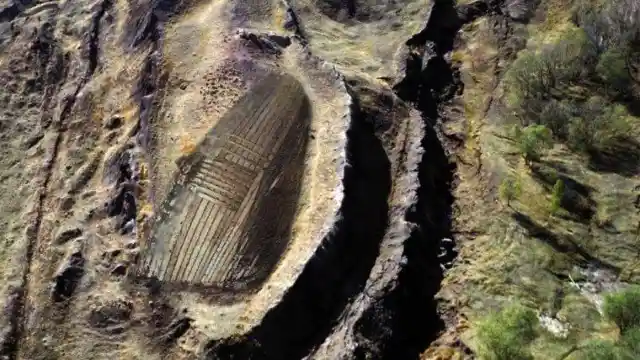
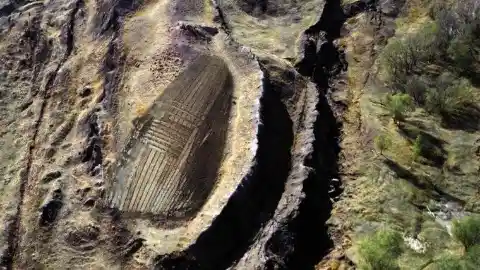
Now, scientists believe they found new evidence of its final resting place. According to the Bible, following the worldwide flood, Noah’s ark came aground on the ‘mountains of Ararat.’ Thousands of years later, scientists believe they have uncovered new evidence.
One of the biggest issues behind searching for Noah’s ark is how it inconsistently lines up with science. Outside of evangelical historians, scientists have a major issue with theories behind the flood.


They consistently point to a major lack of evidence in the soil of a worldwide flood. If a flood were to wipe out the Earth, then we should be able to see evidence of those water levels in the soil.
In addition to the lack of evidence in the soil, scientists question the flood myth due to DNA evidence. In the story of Noah and the flood, Noah is instructed by God to bring his family onboard the massive ark as well a few of each animal.


If his family were the only survivors of the flood, we would be able to trace DNA genealogy back to this one family over 4,600 years ago since they were responsible for repopulating Earth.
How did Noah survive the biblical storm (outside of an act of God)? He needed quite the ship to survive a storm so massive that it wiped out the world while also protecting himself and a zoo’s worth of animals.
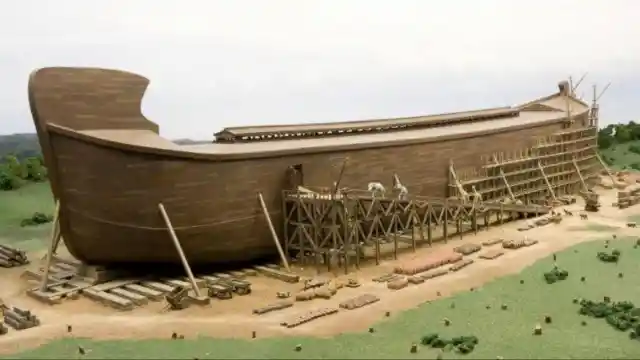
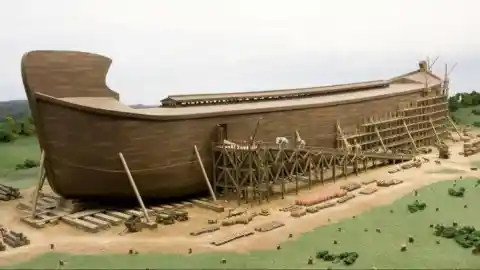
The ark was absolutely massive as God gave Noah the necessary dimensions for the ship. Noah’s ark was 300 cubits long, 50 cubits wide, and 30 cubits tall. That is the equivalent of 450 x 75 x 45 ft. It had three decks inside.
Did you ever wonder what it would be like to step inside Noah’s ark? Fortunately, life-sized replicas exist, giving you the chance to see its massive scale.


In July 2016, a creationist group called Answers in Genesis opened ‘Ark Encounter,’ a theme park, in Grant County, Kentucky. The park is housed inside a life-sized version of Noah’s ark. It has received plenty of criticism for breaking the ‘separation between church and state’ for the tax incentives it receives.
Not only did God tell Noah to bring his family onboard, but also he instructed him to bring along everything necessary to restart life following the flood. This included bringing enough animals with him.
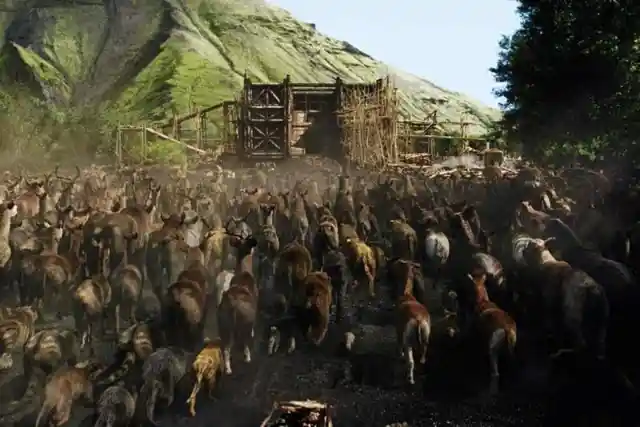
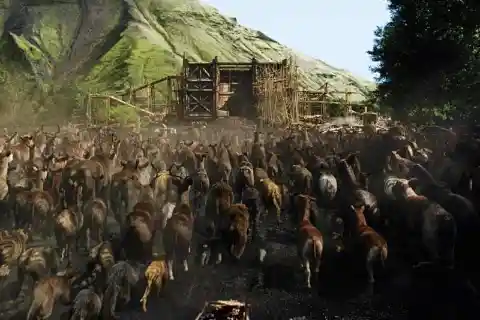
According to the Bible, he was told to bring a pair of each “unclean” animal and seven pairs of the “clean” animals. This has been interpreted as what would be considered as “kosher” and “non-kosher” in the Jewish faith. Once the flood subsided, the animals could then freely roam again.
One group called the Noah’s Ark Ministries International has devoted itself to digging up the truth on Noah’s Ark. The Hong Kong-based group has led numerous expeditions into finding more information on the ark.
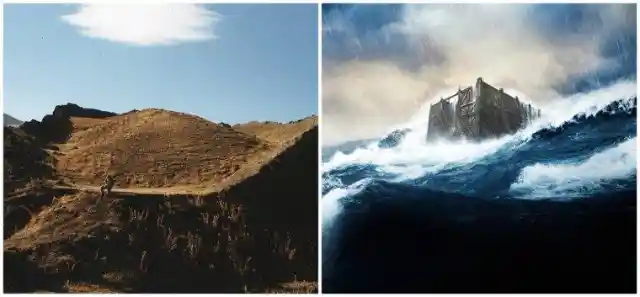
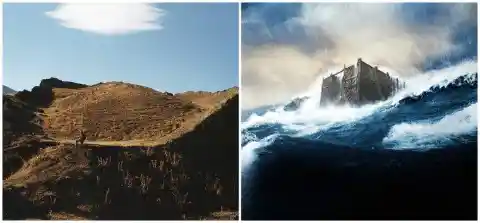
While some experts have taken issue with NAMI and its findings, others believe their research has some merit. An ark hunter from California believes that they might have found the key to the ark’s last known location. Perhaps this new information can lead us to an answer.
As exciting as these findings are, many past findings have been disproved. The search for Noah’s ark has had plenty of unsubstantiated claims thrown around over the past century.
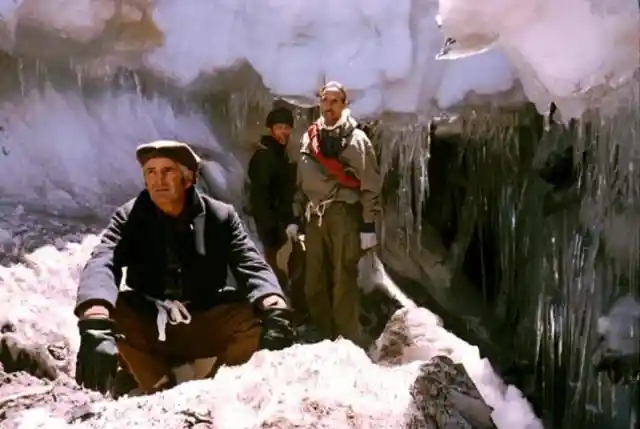

In 1955, a French explorer reported that he found a five-foot beam under a glacier on Mount Ararat. A Spanish research institute certified that the wood beam was about 5,000 years old, putting it in range. However, the explorer admitted he brought the beam from a nearby village.
While most historians agree on the general location of the ark, early Syrian tradition differs from the stories told by Josephus. In early centuries BC, the Syrians believed that the ark landed at Mount Judi.


Early Christian and Islamic tradition calls Mount Judi the ‘Place of Descent.’ Josephus said that the ark’s remains were shown at the ‘place of descent’ by Armenians in the first century, 60 miles southeast of Mount Ararat. Armenians associated Noah’s ark with Mount Judi till the 11th century.
With so many inconsistencies – depending on which group of people you speak with – in the story of Noah, it seems like we might never know where the real Noah’s ark landed following the flood.
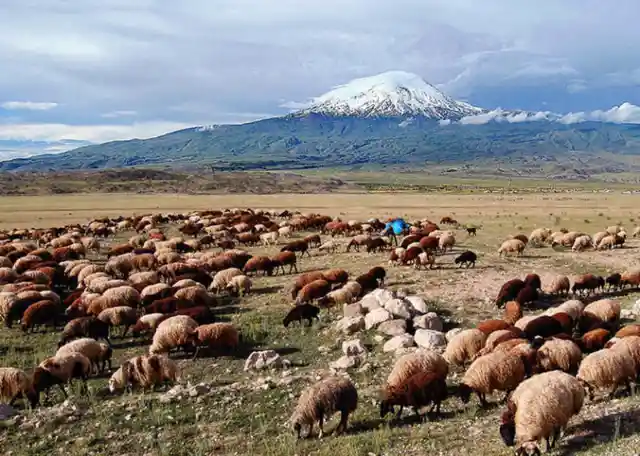
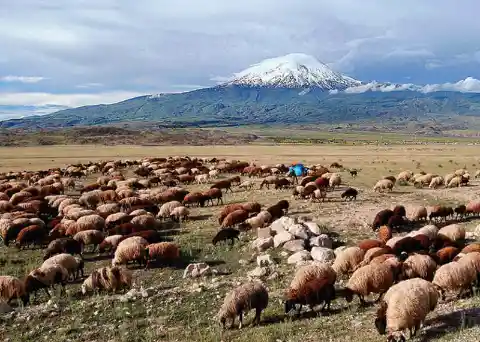
Fortunately, a group of creationists will not let that dream die. The Geoscience Research Institute put on a symposium in Turkey on Mount Ararat to further the discussion. Over 100 scientists and researchers came together to bring their knowledge of the ark forward for discussion, one of whom claims he has the answer.
While the researchers at the symposium discussed the final resting place of the ark, one Oxford University lecturer in ancient history, Nicholas Purcell, expressed his skepticism.
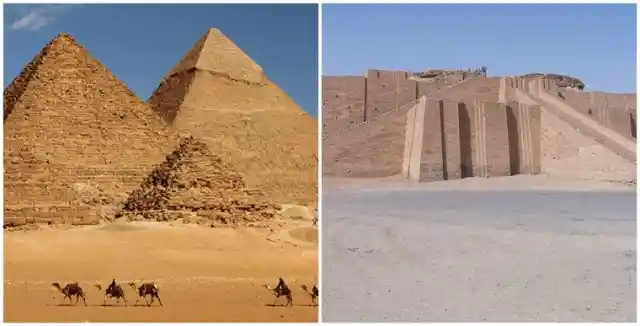
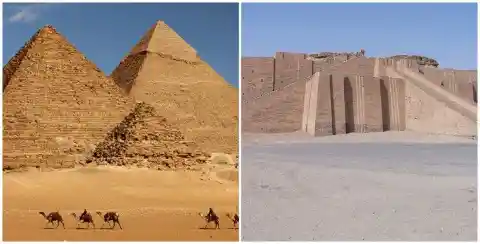
He said, “If floodwaters covered Eurasia 12,000ft deep in 2,800BC, how did the complex societies of Egypt and Mesopotamia, already many centuries old, keep right on regardless?” He even referred to the claims from the symposium as the “usual nonsense.” However, the creationists would not be bothered by the haters.
While most creationists believe that Noah’s ark landed on today’s Mount Ararat, not everyone agrees with that detail. Dr. Andrew Snelling, a Ph.D. from the University of Sydney and a young-Earth creationist, takes issue with the ark hitting ground on Mount Ararat.


He says that it is impossible for it to have landed there since Mount Ararat did not form until after the flood. Why does he feel so strongly about this variation from the story?
Specifically, the story of Noah and the ark are considered to be sacred in the eyes of the Jewish, Christian, Islam and Baha’i religions. While there are many similarities between the interpretations of all four religions, there are subtle differences.


Christian scholars compare Noah’s salvation to the practice of baptism, while Islamic interpretation is that the ark was more like a traditional ship “shaped like a bird’s belly.” Baha’is consider the story to be purely symbolic.
Early theologians like Origen and Augustine were believed to have a clearer idea than most as to what Noah’s Ark might have looked like. Then there were future scholars who aimed to work out the realistic appearance of the vessel.


Alfonso Tostada wrote an account in the 15th century that revealed every single detail about the ark. Then, a century later, Johannes Buteo aimed to lay out the ark’s dimensions. Many scholars subscribed to Buteo’s ideas.
Naturally, a story as intriguing and compelling as Noah’s Ark was bound to be recreated on numerous occasions. Some of the most recent iterations of the story have actually been very successful Hollywood movies.


Darren Aronofsky, who is also famous for directing hit flicks such as Requiem for a Dream and Black Swan ended up making his own version of the Noah story, with Russell Crowe starring as the Biblical character. Steve Carrell also starred as a Noah-like character in Evan Almighty.
Out of all the Mesopotamian flood stories, one that stands out is the oldest version, whose hero is King Ziusudra.
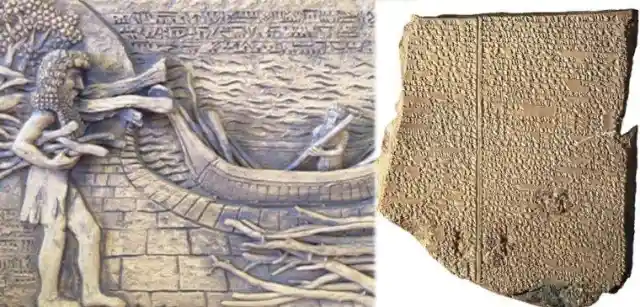
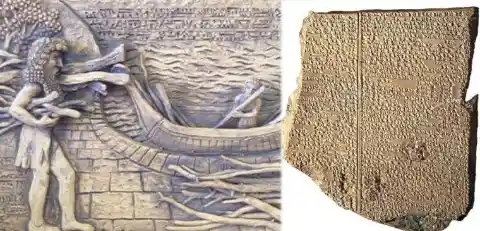
Also known as the Sumerian Flood Story, after being inscribed in the Sumerian city of Nippur back in 1600 BCE; the story details how Ziusudra built a boat and tried to save the lives of the innocent after the gods decide to destroy the world. Of course, this bears a strong resemblance to the story of Noah.
As is usually the case, it is just as important to ask why the many miraculous stories of the Bible happened as it is to understand how.
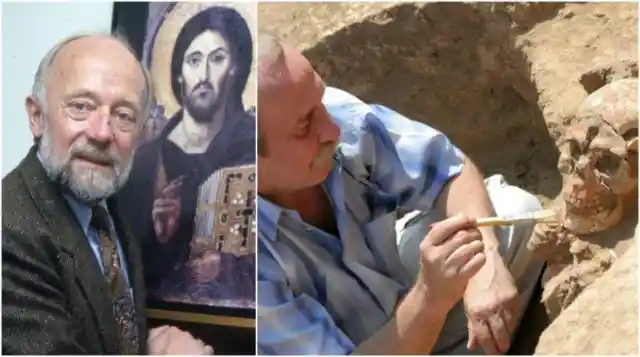
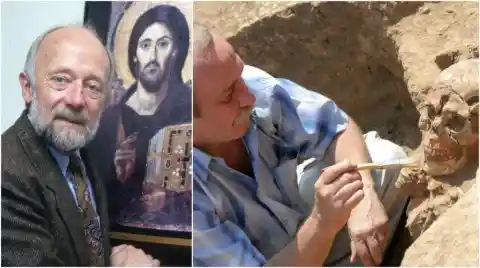
While science always aims to get into the deepest details to explain the cause of all things, the Bible seeks to explain the meaning behind these same things. Why did the universe come to be? What is it’s purpose? This is exactly how religious scholars approach the story of Noah.
In a modern excursion, Dr. Friedrich Parrot ascended Ararat in Turkey in 1829, over 500 years after Marco Polo recorded his sighting of Ararat.


While Dr. Parrot did not bring a shovel and attempt to dig up the ark, he did detail how the locals felt about the legend of Noah’s ark. He said, “all the Armenians are firmly persuaded that Noah’s Ark remains to this very day on the top of Ararat, and that, in order to preserve it, no human being is allowed to approach it.”
After years of attempted excavations and adventures, one group, NAMI (Noah’s Ark Ministries International), believes they found evidence of the Ark on Mount Ararat. In 2010, a group of evangelicals from China and Turkey went out hoping to find some evidence to support their beliefs.

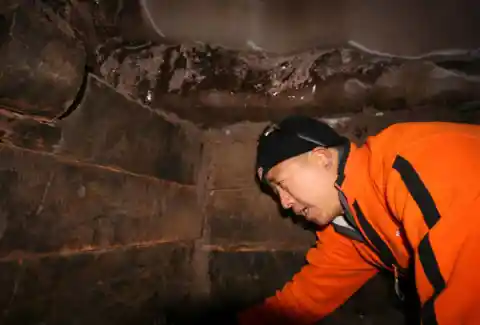
After weeks of searching, they claimed to have found wooden artifacts from the ship which would confirm it as the location of the historic ship. It seemed like the breakthrough the world was looking for.
Not long after Fernand Navarra, the French explorer, admitted he fabricated his findings, helicopter pilot George Greene took his shot at seeking the ark.
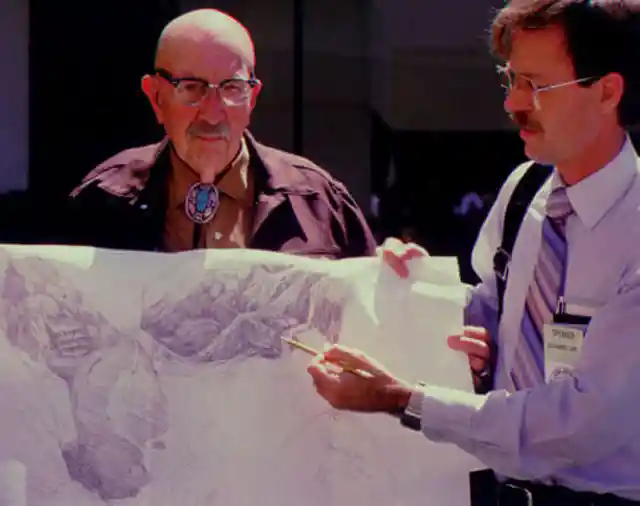
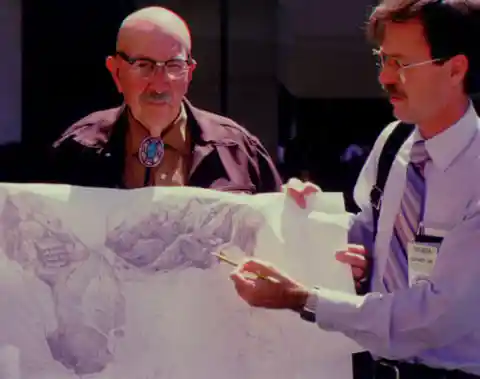
During a helicopter ride above Ararat, Greene said that he could see the ark from the sky. He said it was nestled into the side of a rock cliff about 13,000-14,000 feet above sea level. However, his photos failed to gain investment in an expedition. Many believe the false ark he saw was a large chunk of basalt.
One of the most intriguing details about Noah’s Ark from a theologian’s perspective is that it is theorized to be a microcosm of creation.
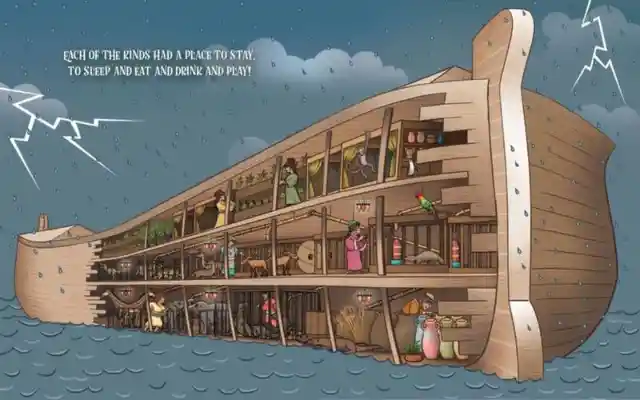

Noah’s ark, which supposedly had three decks, symbolized the three levels that Hebrews believed to form the world – the heavens, the earth, and the waters. According to the Bible, the three-level world was created by God, and when He decided to destroy it, He protected Noah, his family and a large group of animals who lived in a three-level vessel.
One of the mysteries surrounding Noah’s Ark is working out exactly what material it was made from. According to The King James Version of The Bible, the Ark was made from “gopher wood.”
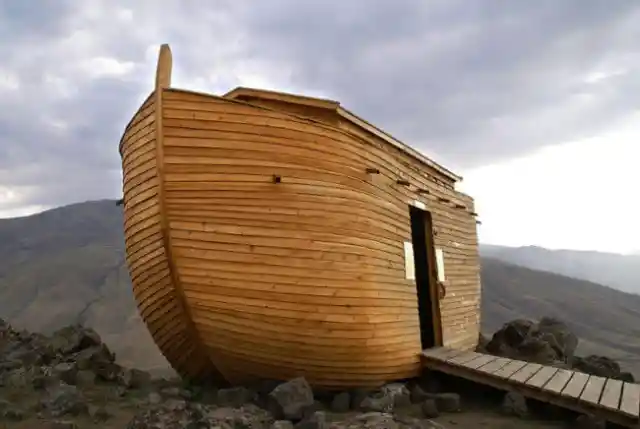

However, since there are no trees that stand today with this name, it is hard to verify whether this was true or not. Some theorists speculate that a wrong word was used. This is why the NIV version of the Bible uses the more popular term “cypress wood.”
Although it is commonly thought that Noah was instructed by God to take two of each animal to his Ark, there are actually contradicting statements in The Bible about this.


In one passage, it says that Noah was instructed by God to take “seven pairs of every kind of clean animal” and “one pair of every kind of unclean animal,” as well as “seven pairs of every kind of bird.” As a result, it may have actually been 14 of each animal.
The question of exactly how many animals there were on the Ark continues to be asked to this very day. Some experts believe that there was probably at least 2.15 million sheep in the vessel.


However, many have been skeptical about this number, wondering where the humans would’ve gone. Surely they needed more space to live, sleep and eat. Other theorists speculate that it was more likely that no more than 16,000 animals inhabited the Ark at any given point during the time of the flood.
Mount Ararat holds the same name as the mountains described in the Bible and is generally considered to be the location of the ark. The snow-capped Mount Ararat is the tallest peak in Turkey at 16,854 ft.
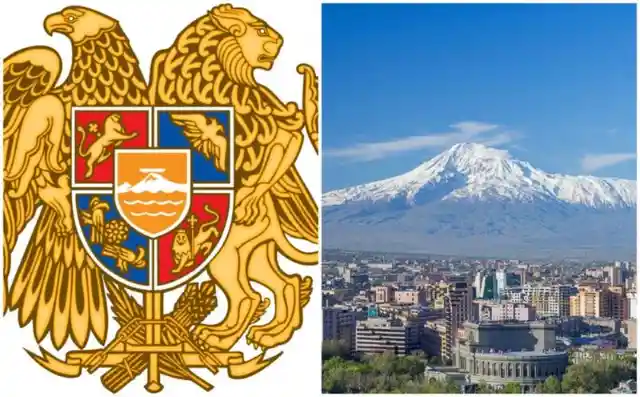
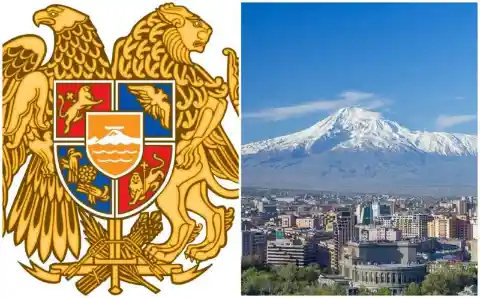
It is a dormant volcano on the far east side of Turkey. The site is considered very sacred to Armenians due to its connection to Noah and their deep Christian beliefs. Armenians love it so much that it is on their coat of arms along with Noah’s Ark.
People have attempted to identify the place on which Noah’s ark first hit land following 150 of flooding for generations. According to Josephus, a first-century Roman scholar, the ‘mountains of Ararat’ are located in the area formerly known as Armenia.


This account is repeated numerous times by other scholars of the time such as Hieronymus the Egyptian, and Nicolaus of Damascus. However, not all ancient scholars agree that this is the precise location.
Marco Polo, the famed explorer known for his journeys into Asia, noted in his book The Travels of Marco Polo, “In the heart of the Armenian mountain range, the mountain’s peak is shaped like a cube (or cup), on which Noah’s ark is said to have rested, whence it is called the Mountain of Noah’s Ark.


It is so broad and long that it takes more than two days to go around it.”
History buffs certainly know about Epic of Gilgamesh, the Mesopotamian epic poem. The epic is recorded on 12 tablets. However, only two-thirds of the tablets have been recovered.
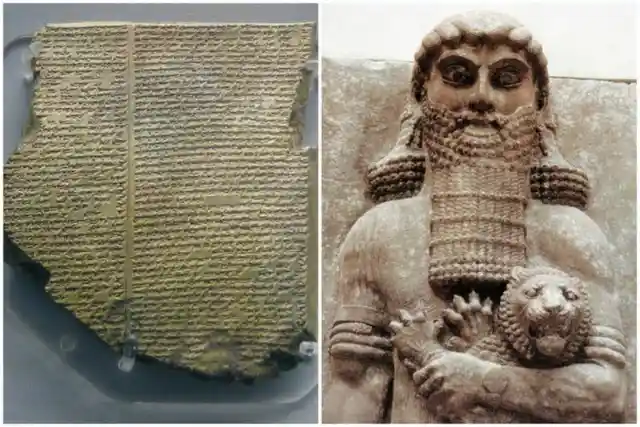
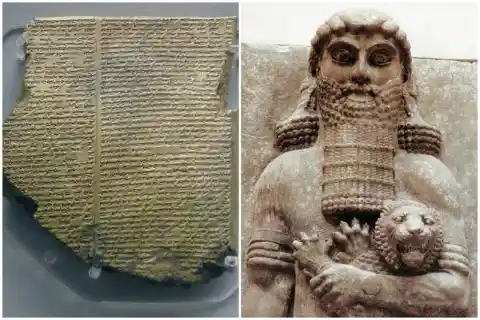
It tells of Gilgamesh on his journey to find eternal life, in which he is told a story of the Great Flood. The flood in Gilgamesh’s story is eerily close to the story of Noah’s ark. The two stories are told nearly “point by point and in the same order.”
One of the most confusing conundrums surrounding the story of Noah’s Ark is working out where it fell in the timeline of history alongside the Ice Age.


This is a period when specifically, ice sheets were formed in Northern Hemisphere. When scientists use the term “Ice Age,” it doesn’t mean that it ended with the melting of ice sheets, but rather the extreme temperatures that made ice rapidly retreat. Ultimately though, there is still a lot to learn.
One Armenian man, Georgie Hagopian, claimed that he saw the ark as a boy at the turn of the century. However, his story had a few inconsistencies.
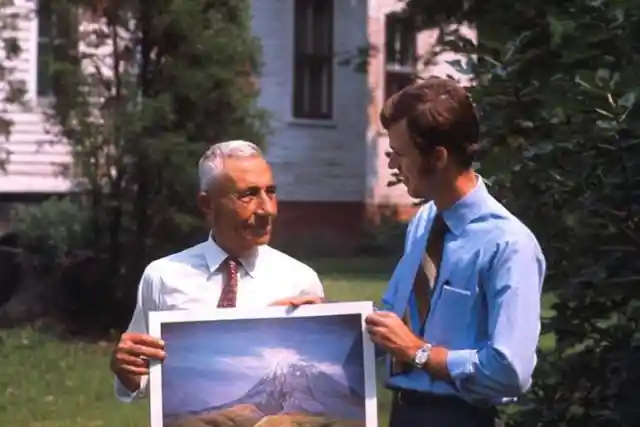

In each telling of the story, he gave a different year in which he saw the ark (1902, 1906, 1908, and 1910). Hagopian claimed to have climbed on the roof with his uncle. Many find the story difficult to believe to his described ease in finding it when so many others have struggled.
Perhaps one of the main reasons researchers cannot find Noah’s ark is because the story does not come only from Genesis in the Bible. Plenty of scholars believe that the Bible is not the origin of the story.
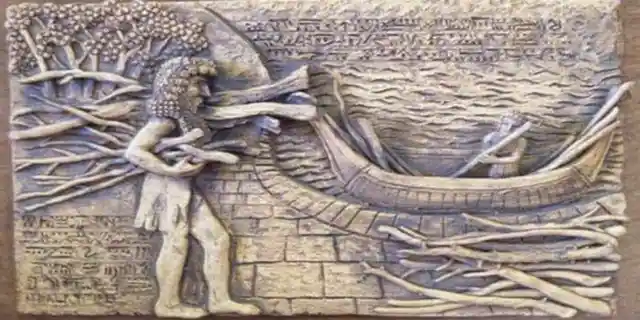
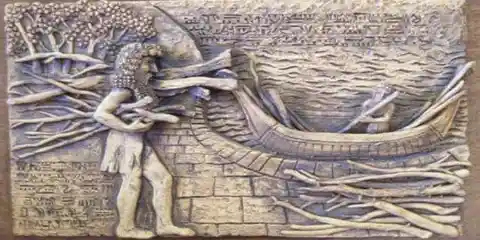
They believe it came from Mesopotamia (modern day Iraq and Iran) from which there are nine known versions of a massive flood. The story of a global flood which destroys everyone does not come up until the Old Babylonian period (20-16 centuries BC).
Regardless of the scientific question marks about the story’s accuracy, the story of Noah is one of the notorious tales from the Bible.
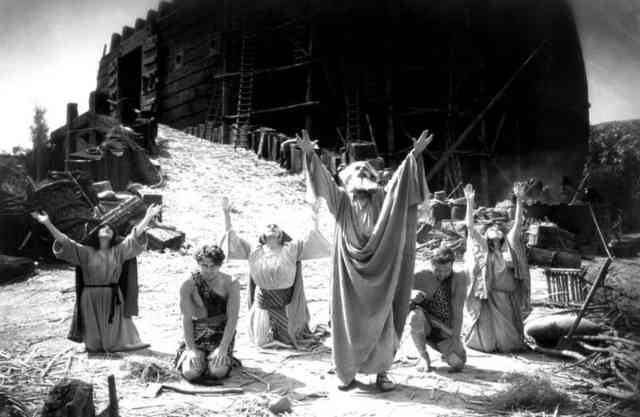
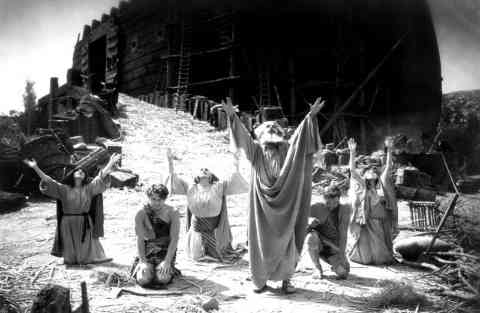
In Genesis chapters six through nine, we hear the story of Noah, a righteous man, whom God instructs to build an ark. God was fed up with the wickedness and corruption and had Noah build the ark to spare him and his family’s lives from the catastrophic flood in which everyone would perish.
If you were to ask someone about the ark’s final resting place, they are likely to tell you the same place.
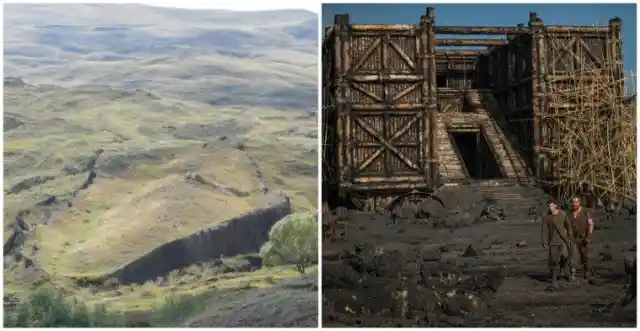
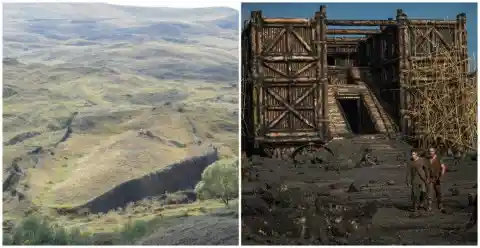
In Genesis, it tells the story of Noah’s ark and its final resting place on the ‘mountains of Ararat.’ This leads many to believe that the evidence of the ark will be found in a place which today bares the same name. It has become the center of the legend which we continue to try and solve.
Something has always stuck with Dr. Snelling from his research. He said, “The biblical reference to ‘mountains of Ararat’ as the landing site of the Ark suggests those mountains formed well before the Flood ended.
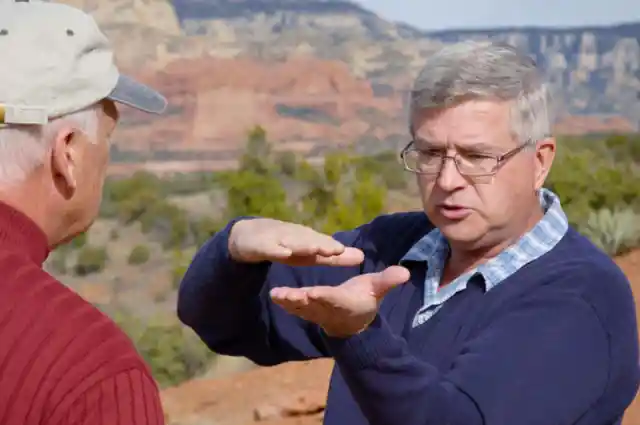

The Flood was a global catastrophe that totally reshaped the earth’s geology, and the earth’s surface has continued to change since then. Perhaps the geology of the modern Mount Ararat region sheds light on whether we should be looking for Noah’s Ark on that mountain.”
Dr. Snelling is adamant, even within his creationist beliefs, that Mount Ararat cannot be the place. He said, “The volcano now called Mount Ararat did not grow until well after the ocean (flood) waters had retreated.
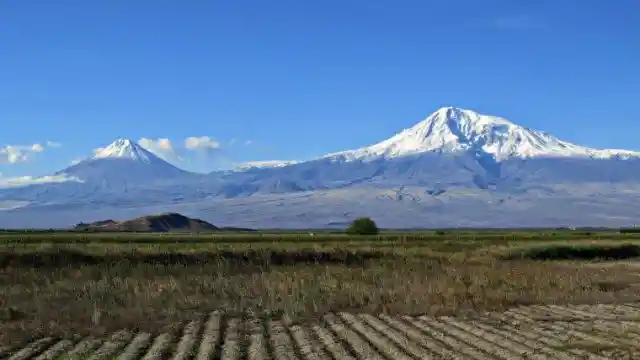

Furthermore, the lavas and ash layers of Mount Ararat date to the time of the post-Flood Ice Age. Thus, from my perspective as a biblical geologist, I do not expect to find Noah’s Ark on Mount Ararat.”
With plenty of backlash from the haters, one American researcher believes that he actually found evidence of Noah’s ark on Mount Ararat.


Professor Raul Esperante is from California and works with the Geoscience Research Institute (which is sponsored by the Seventh-day Adventist Church) in digging into this seemingly unsolvable question. He said, ”My purpose is to visit the sites around the mountain to find clues about catastrophic events in the past.”
In April 2010, NAMI archaeologists claimed that they found the ark while searching Mount Ararat. Man-Fai Yuen, a NAMI researcher, said, “The search team and I personally entered a wooden structure high on the mountain.
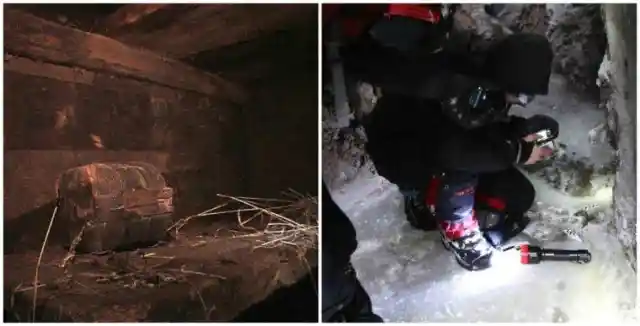

The structure is partitioned into different spaces. We believe that the wooden structure we entered is the same structure recorded in historical accounts and the same ancient boat indicated by the locals.” They claim carbon dating put the wood at 4,800 years old.
After their findings, NAMI stood by their discovery. Eung Wing-Cheung, a filmmaker with NAMI, said, “It’s not 100 percent that it is Noah’s ark, but we think it is 99.9 percent that it is.”


Paul Zimansky, a Middle East-specializing archaeologist from Stony Brook University, replied to the findings snarkily. He said, “I don’t know of any expedition that ever went looking for the ark and didn’t find it.” However, Esperante is adamant that NAMI’s findings are correct.
Esperante is doing everything he can to prove Mount Ararat as the location and NAMI’s findings as correct. He said, “I think that rigorous, serious scientific work is needed in the area…
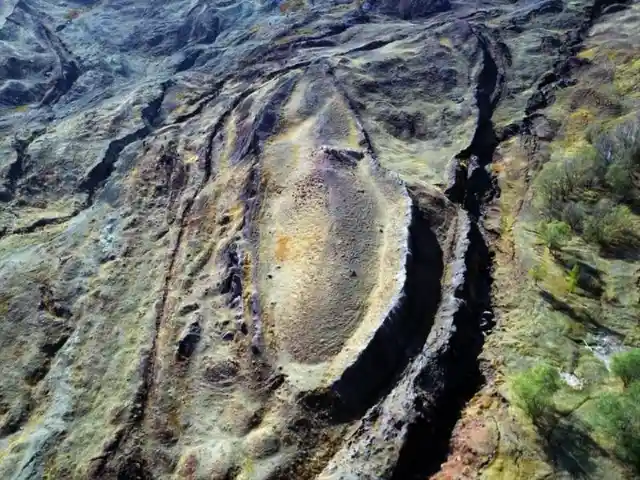
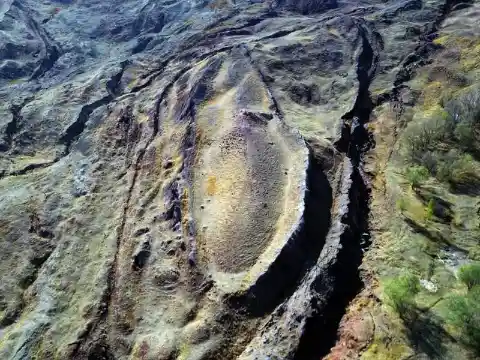
The result of my findings will be published in books, publications, and journals, but at this point, it is too early to know what we are going to find. Once the scientific community knows about the existence of Noah’s Ark in Mount Ararat, we can make it available to the general public.”